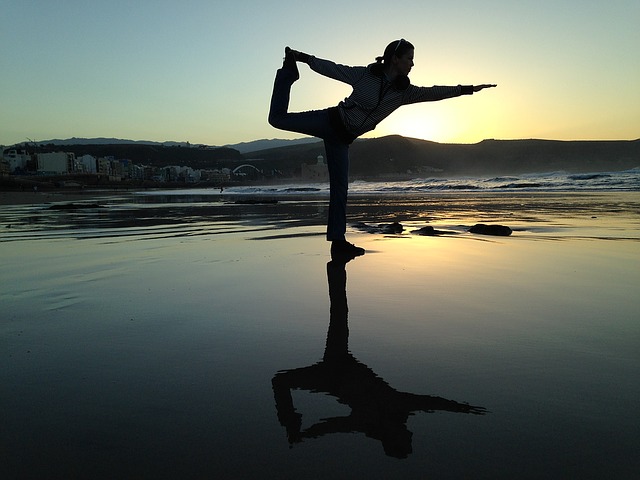Archive for May 2018
Spinal Health is a Balancing Act
Balance is essential for spinal health
Balance is innate- the three main requirements for balance are vision, the vestibular system and the somatic sensory system. These three elements work together to define your position in space, while keeping you upright and centered, whether stationary or in motion. From a chiropractor’s perspective, balance is further defined by your level of control over equilibrium and stability. This has important ramifications for wellness, injury prevention and athletic performance. But so many people treat balance as just another subconscious human process; the reality is, improving balance is a signal way to improve your overall health, while preventing against spinal injury and degeneration.
Hunched Over All Day: An Unnatural Position For Your Spine
Are you a habitual sitter?
Whether it is a job requirement, or a personal preference for leisure time, Americans are spending more time in a seated position than ever. The problem? Humans were simply not designed to sit; sitting is not our spine’s preferred position, as evidenced by the fact that sitting puts more downward pressure on your spine than standing or laying down. We then compound this pressure by adopting poor posture- whether you slouch down, hunch forward or perpetually sit with your head forward, any posture that is not neutral is going to increase the amount of downward pressure on your spine. Unfortunately, for many of us, there is no way to break this cycle of sitting; instead, the best thing we can do is practice damage limitation.
The Sleeping Dragon: When Injuries Remain Dormant
Most people will suffer an injury at some point in their lifetime
And while the degree of injury varies greatly, all of them should be treated with the gravity they deserve. The younger your body, the more resilient you are to pain and dysfunction, meaning that you are able to process an injury more effectively than an older person. However, spinal injuries, particularly those that occur in the intervertebral discs, can occur, be processed in their acute phase, and rehabilitated, but then remain; this dormancy phase essentially means that while you are able to go about your life unaffected in the meantime, the structural integrity of the disc is compromised and it begins to degrade slowly over time. Once the pain re-enters your life down the line, it seems as though it has come to stay.
Is My Bed Causing My Back Pain?
If not causing, it could definitely be contributing.
While you may have a sentimental attachment to your current mattress, it is worth asking the question: does it support your back? Sleeping on the wrong mattress can indeed cause, or at least worsen, back pain symptoms by failing to support your spine in its extended, resting position.
Sleep should be a time of rest and recuperation for the spine and surrounding musculature; by failing to provide adequate support, a compromised mattress could cause a double-whammy effect on your spine and well-being. So what is the difference between the wrong and right mattress? There is no single answer- the right mattress for you is determined by several factors. Read on to find out more.
Morning Time: When Sciatica Symptoms Are Sharpest
Waking up in pain
Sciatica is caused by compression of the largest nerve in the body. Many people find that this type of pain is at its most severe in the morning time and there is one quite clear explanation for this: as sciatica is caused by nerve compression, any activity that causes such compression is bound to cause you more pain. It is very likely that if your sciatic nerve pain is at its most severe in the morning, you may need to address the way you sleep. When choosing to account for your sciatica with conservative treatment methods like chiropractic, there are three main avenues available to you:
- Address misalignment that is causing the compression in the first place
- Stretch and condition the muscles that could be impinging on the nerve
- Avoid the degree to which the nerve is compressed
The latter is where your sleeping style comes into question. Read on to find out how you can sleep comfortably while accounting for your sciatic nerve pain.
Starting Your Day With Your Spine in Mind
The best way to ensure you get off to a good start each day
Approach your day like a really long exercise routine- whether your job involves a lot of moving or barely any movement at all is immaterial. Each type of job comes with a unique set of risk factors for your spine. One way to prevent these risk factors from doing damage to your spine is to prevent them altogether by strengthening and stretching the supporting back muscles as soon as you wake up. A morning stretch routine has the further advantage of:
- Getting your blood moving
- Decreasing tension in the musculature
- Improving range of motion in your spinal joints
Read on to find out about a few key yoga poses that can be done every morning, even in a hurry.
Tight Hips Spell Trouble for Your Spine
The importance of hip mobility
When it comes to spinal health, your hips can go both ways: tight hips cause instability at the base of the spine and lower back pain; loose hips improve your body’s ability to stabilize and transfer forces, helping to prevent injury. Opening your hips is a key way to release many regions from the tightness and tension of daily life. Fortunately, you can practice strengthening and stretching your hips from anywhere at any time.
Changing Alignment Habits for Less Pain
Your body is a conformist
Many of us have led ourselves down the road toward back pain through bad habits. Some of these habits are more subconscious than others, such as the way we position our bodies as we perform repetitive tasks. If you work at a computer all day, and pay little attention to posture, chances are good that your body is training itself into holding patterns that are pulling your body out of alignment and contributing to tension and pain. In order to start feeling less pain, we need to seriously look at the holding patterns that our bodies have established over the years.







